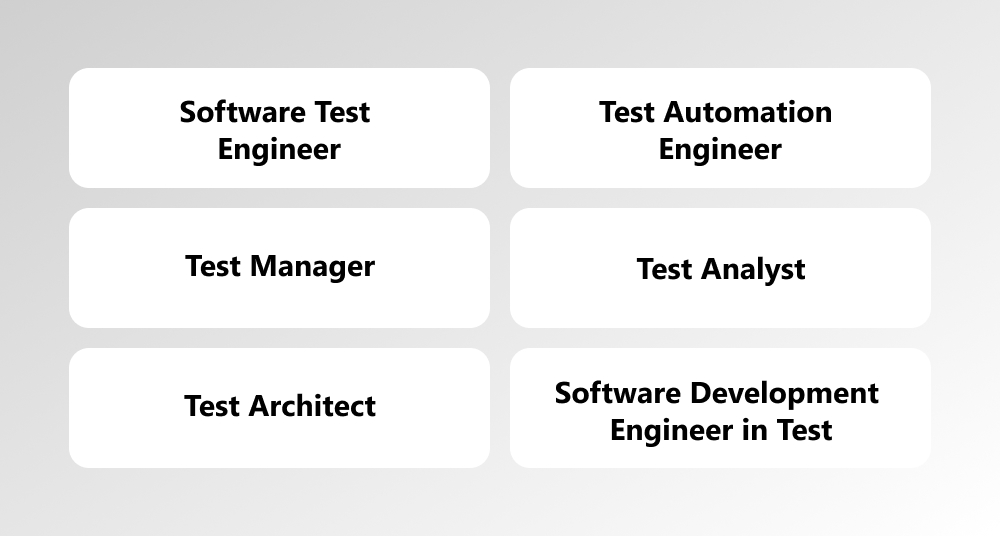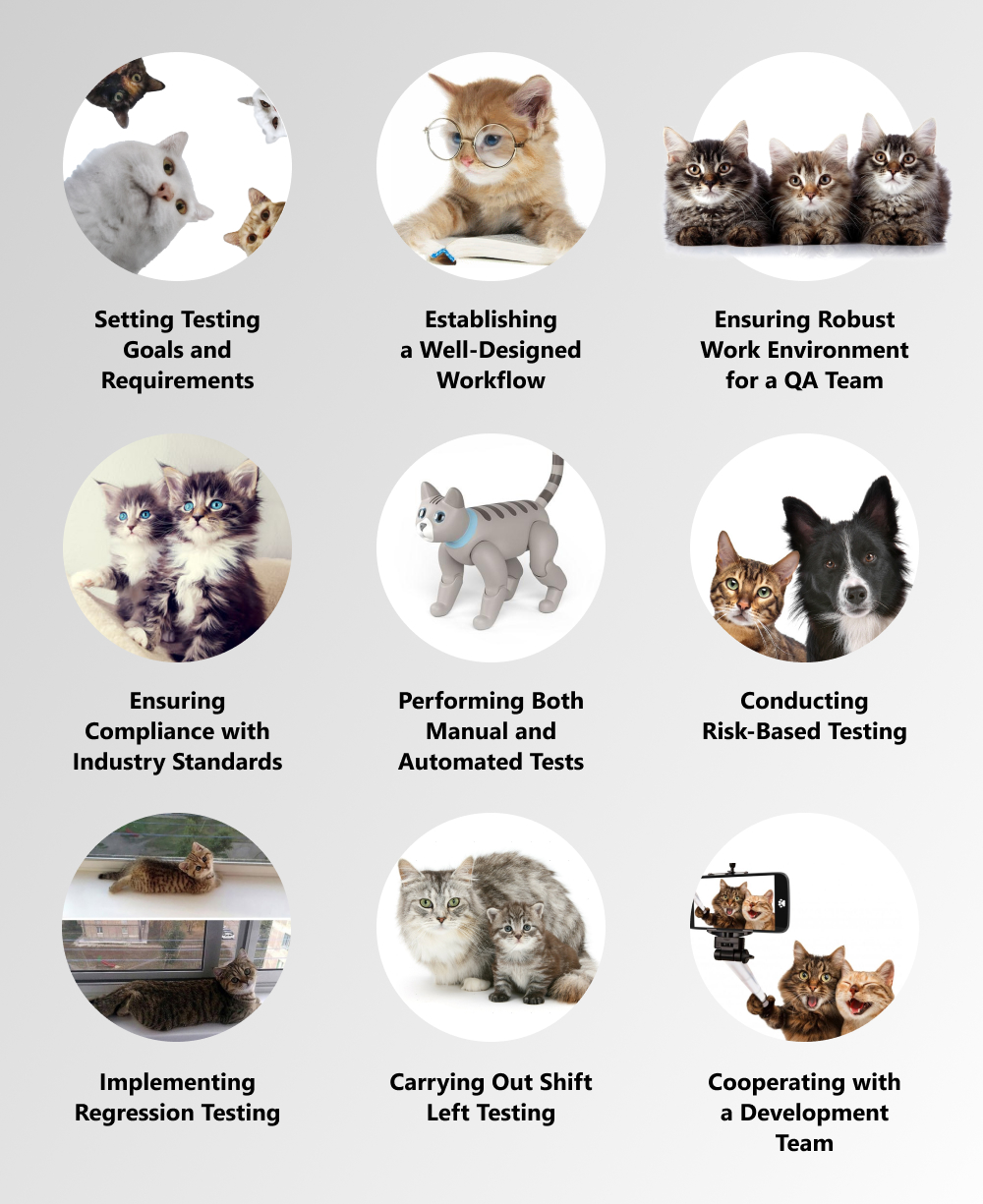The main purpose of any business is to prevent the release of a poor quality product. Even insignificant bugs and errors can result in huge financial losses for the project. For example, US companies lost $2.08 trillion due to poor software quality in 2020, according to the report published by the Consortium for Information & Software Quality (CISQ). That’s why it's important to develop and apply effective QA best practices and methodologies that involve various types of testing, test cases, and other testing QA activities.
written by:
Nadezhda Mal
The main purpose of any business is to prevent the release of a poor quality product. Even insignificant bugs and errors can result in huge financial losses for the project. For example, US companies lost $2.08 trillion due to poor software quality in 2020, according to the report published by the Consortium for Information & Software Quality (CISQ). That’s why it's important to develop and apply effective QA best practices and methodologies that involve various types of testing, test cases, and other testing QA activities.
Contents
9 Software QA Best Practices
As the software development landscape evolves, so does the quality assurance process. To keep up with the latest trends and technologies, QA teams should continuously adapt their processes and procedures. Fortunately, there are a number of tried and tested QA methods that you can implement to enhance the quality of your software solutions. In this article, we’ll explore 9 of the most popular and effective QA practices that your team can start using today.
Like software development, quality assurance is a complex process that involves various engineers and specialists with different skills and expertise in QA practices and testing activities. However, it is not limited to testing only a ready software product. The QA process starts long before the development stage and doesn't stop after the product is brought to the market. So, let's have a look at the QA best practices applied by the team of testers to check the software quality, test new features, as well as make sure that the final product complies with the customer's requirements and acceptance criteria.
1. Setting Testing Goals and Requirements
The QA team should check out testing requirements and customer expectations before proceeding to the software testing process. The customer's task is to share his or her demands and acceptance criteria, which the testers should observe to solve all the issues and ensure the high quality of the software. The QA team needs to understand what to do, how to do it, who is the target audience, as well as how to ensure that the testing process is done properly. In addition, clear requirements will help test engineers and other team members assess the resources required for quality assurance and testing procedures.
2. Establishing a Well-Designed Workflow
Since the QA team performs testing activities in several steps, a clear workflow is a guarantee of success. The testing process workflow should include the following:
- a test plan, including software requirements and exit criteria, the scope of test tasks, necessary resources, testing environment, and deadline;
- test cases or checklists, describing test inputs, expected results, and testing conditions;
- various types of testing, including functional testing, regression testing, automated testing, manual testing, and other software QA practices;
- test reporting, including software QA practices, testing results, lists of bugs, and so on.
The distinctive workflow helps in reducing delays and rework, as well as allows QA engineers to avoid common issues in both development and testing. The clients, in turn, will have an opportunity to monitor the testing and QA process. Thanks to regular reporting, the QA team and the customer will be able to establish transparent cooperation and make the software testing process more effective.
3. Ensuring Robust Work Environment for a QA Team
The work environment has a direct effect on the staff’s productivity and attitude toward their duties. When every member of the QA team knows their job, it can significantly increase the efficiency of the QA testing process.
First of all, it is required to define QA roles. The quality assurance process includes different activities that are carried out by various specialists. To establish smoothly-run testing activities, all roles should be specified in the test plan. There can be the following jobs:

4. Ensuring Compliance with Industry Standards
Businesses must follow various regulations and standards set by different industries and jurisdictions. For example, the Payment Card Industry Data Security Standard (PCI DSS) is aimed at protecting people’s payment card information worldwide, the Health Insurance Portability and Accountability Act (HIPAA) is responsible for the protection of health information of US residents, while the General Data Protection Regulation (GDPR) controls the security of personal data in Europe.
Compliance testing helps companies make sure that their software solutions meet the requirements of particular countries, allowing them to avoid enormous fines. For instance, a company can pay $50 thousand for any violation of HIPAA rules (e.g., a security incident or data breach). You don't want to lose your money and reputation due to poor quality software, do you?
5. Performing Both Manual and Automated Tests
Combining automated and manual testing approaches accelerates the testing process and improves software quality. Manual testing requires the QA team to run test cases manually to find bugs and errors, as well as report them to developers as early as possible. Automated testing requires testers to perform tests automatically using scripts and special automation testing tools. This approach allows engineers to check the functionality and features of a software solution. Test coverage increases when using both manual and automated testing. The testing process is considered successful when test coverage is 80% to 100%.
6. Conducting Risk-Based Testing
The aim of this approach is to identify the most serious risks during the testing process. The QA team assesses possible risks, prioritizes them, and plans the testing process. Risk-based testing helps engineers find and eliminate the most critical risks that can adversely affect the overall performance of the software. As a result, the customer receives a quality product, fully meeting all his or her requirements.
The entire project team should be involved in this process. This means that developers, business analysts, project managers, technical architects, QA specialists, and even customer representatives can participate in the brainstorming sessions to define all possible risks.
7. Implementing Regression Testing
Regression testing helps ensure that changes or updates made to a software product won't introduce new bugs or break existing features. By following best practices for regression testing, companies can maintain the integrity and stability of their software throughout its lifecycle. This type of testing can be done manually or automatically, depending on the scope and complexity of the product. Here's an example of how it works:
A banking software has a feature that allows users to transfer money between their accounts. A bug is reported that causes the transfer to fail when the amount exceeds $10,000. The developer fixes the bug and runs a unit test to confirm the transfer works at any amount. The tester then runs a regression test to verify that other features, such as balance inquiry or transaction history, work as expected.
8. Carrying Out Shift Left Testing
Shift left testing is regarded as one of the most important quality assurance best practices. This approach is applied at earlier stages of the development process. Firstly, it is much cheaper to find and eliminate bugs at the beginning than at the final stages of the SDLC or at the production phase. Thus, researchers from IBM calculated that fixing a bug after the product release costs 4 to 5 times more than eliminating it during the QA process. Secondly, the quality of the software will be higher if the QA team identifies and removes errors during the development process.
9. Cooperating with a Development Team
To ensure a productive and successful quality assurance process, development teams and QA engineers should communicate with each other. Close collaboration will allow them to avoid misunderstandings and find effective solutions to issues identified during tests. It is also important to share ideas and feedback between both teams as it can speed up the QA process, cut development costs, and reduce time to market.
To Wrap Up
The best quality assurance practices should be focused on the improvement of the overall quality of the software, including finding and fixing bugs at the initial stages of the SDLC. During the QA process, testers should check the software product for compliance with industry practices, fundamental principles, acceptance criteria, and customer requirements. The QA team should not look at quality assurance as a single phase in product development.
The pack of the above-mentioned QA best practices should be followed starting from the discovery stage up to software release and beyond, including maintenance and support. Of course, you don't need to use all these quality assurance best practices in one project. A professional and experienced QA team is capable of choosing the right approach and the most appropriate tools to match the requirements of a particular customer. This will lead to a seamless workflow and exceptional quality of the end product.
For more information about software testing and quality assurance, what QA practices, tools, and test cases we implement, please contact our Support Team or visit our website.

Contacts
Feel free to get in touch with us! Use this contact form for an ASAP response.
Call us at +44 151 528 8015
E-mail us at request@qulix.com









